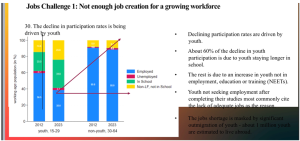
By Joshua Worlasi AMLANU & Ebenezer Chike Adjei NJOKU
Investor demand for Treasury bills slumped last week as liquidity moved into the Bank of Ghana’s higher-yielding open market bills, reflecting a profit-driven shift in the domestic money market.
At the central bank’s latest auction, GH¢5.17billion was raised at an effective yield of 24.94 percent – far above rates on Treasury bills, where the 91-day cleared at 10.14 percent. By contrast, government secured only GH¢2.73billion from Treasury bill sales against a GH¢4.24billion target.
With maturities worth GH¢3.84billion falling due across all tenors, the Treasury covered about 71 percent of its obligations.
The shortfall highlights government’s push to lower its borrowing costs at a time when BoG has eased its policy stance but kept liquidity tight through aggressive open market sterilisation.
Market participants say the nearly-25 percent yields on OMO bills, aimed mainly at banks and institutional investors, have become a strong pull factor away from T-bills where rates remain capped.
“The current rates are not attractive to investors – not in government securities and not in OMO bills,” Courage Boti, Manager-Macroeconomic Research and Investor Relations, GCB Bank, said in an interview.
He expects banks to shift toward lending as economic conditions improve.
“Most banks will go aggressive on loans as we speak, to drive employment creation and job growth,” he said.
Mr. Boti added that liquidity could also flow into real estate or the reopened bond market, where some securities are trading at discounts.
“That is the strategy I believe most banks and investment houses will consider,” he said, cautioning that excess liquidity not absorbed by BoG risks undermining the disinflation process.
The central bank’s strategy underscores competing policy objectives. While government seeks to curb its short-term funding costs and anchor inflation expectations, BoG is paying nearly double Treasury yields to absorb liquidity and stabilise the cedi after months of double-digit inflation and currency weakness.
The heavy uptake of OMO paper has left less room for banks to participate in Treasury auctions, where yields remain artificially compressed.
Government faces a GH¢6.27billion maturity across Treasury bill tenors this week and has set a GH¢6.43billion target at its August 24 auction to manage refinancing pressures.
Analysts expect upcoming domestic bond coupon payments to support reinvestment demand but say the yield gap between T-bills and OMO paper will persist, shaping investor appetite and borrowing costs.
In the secondary bond market, activity strengthened slightly, with trading volumes rising to GH¢2.05billion from GH¢1.90billion the previous week.
Trading remained concentrated in shorter-dated instruments – with the February 2029 bond clearing at 16.46 percent, the February 2030 at 17.05 percent and the February 2028 at 16.53 percent, reinforcing investor preference for limited duration risk.
The post OMO bills lure investors with 25% yields, draining demand for T-bills appeared first on The Business & Financial Times.
Read Full Story















Facebook
Twitter
Pinterest
Instagram
Google+
YouTube
LinkedIn
RSS